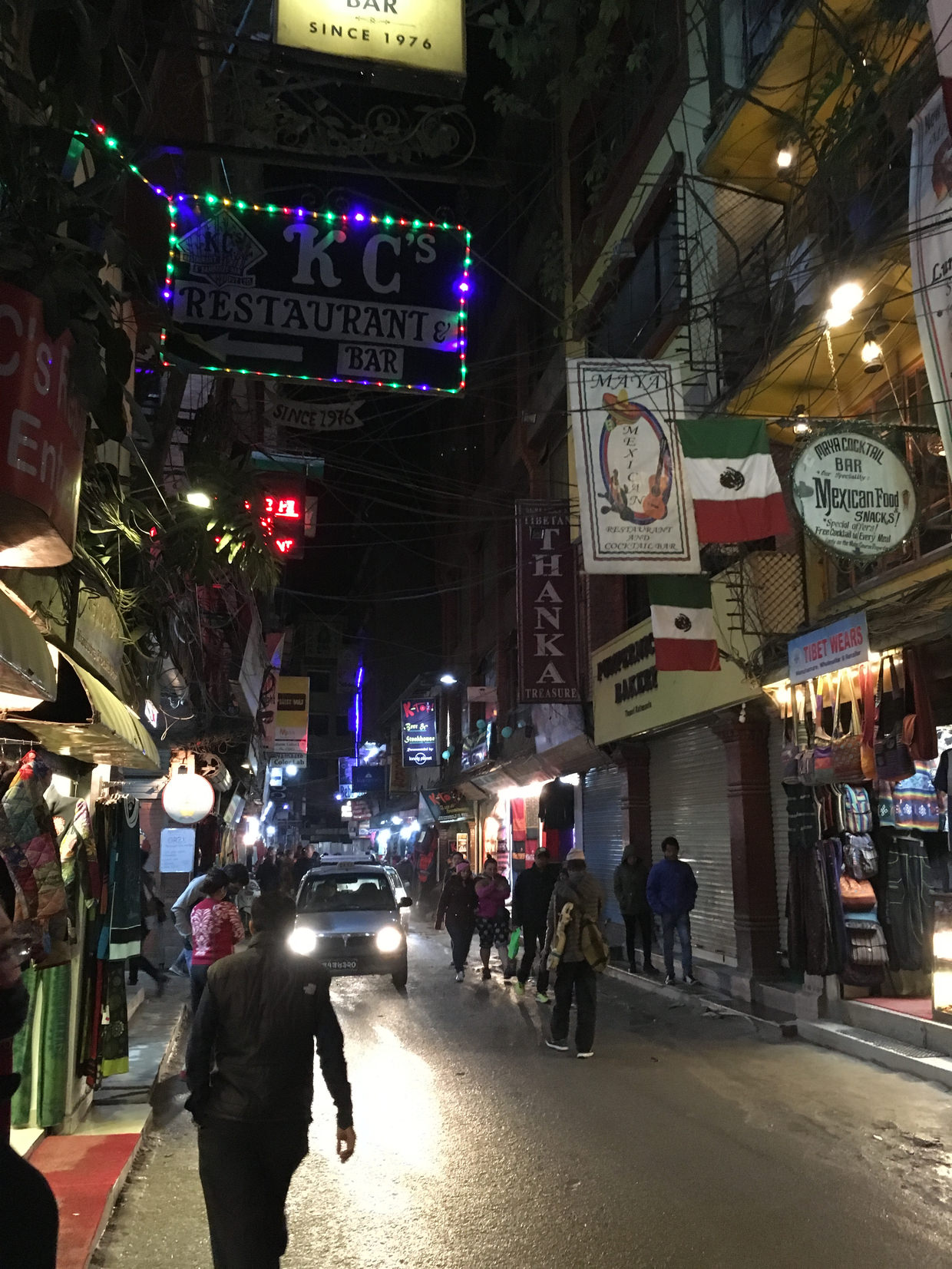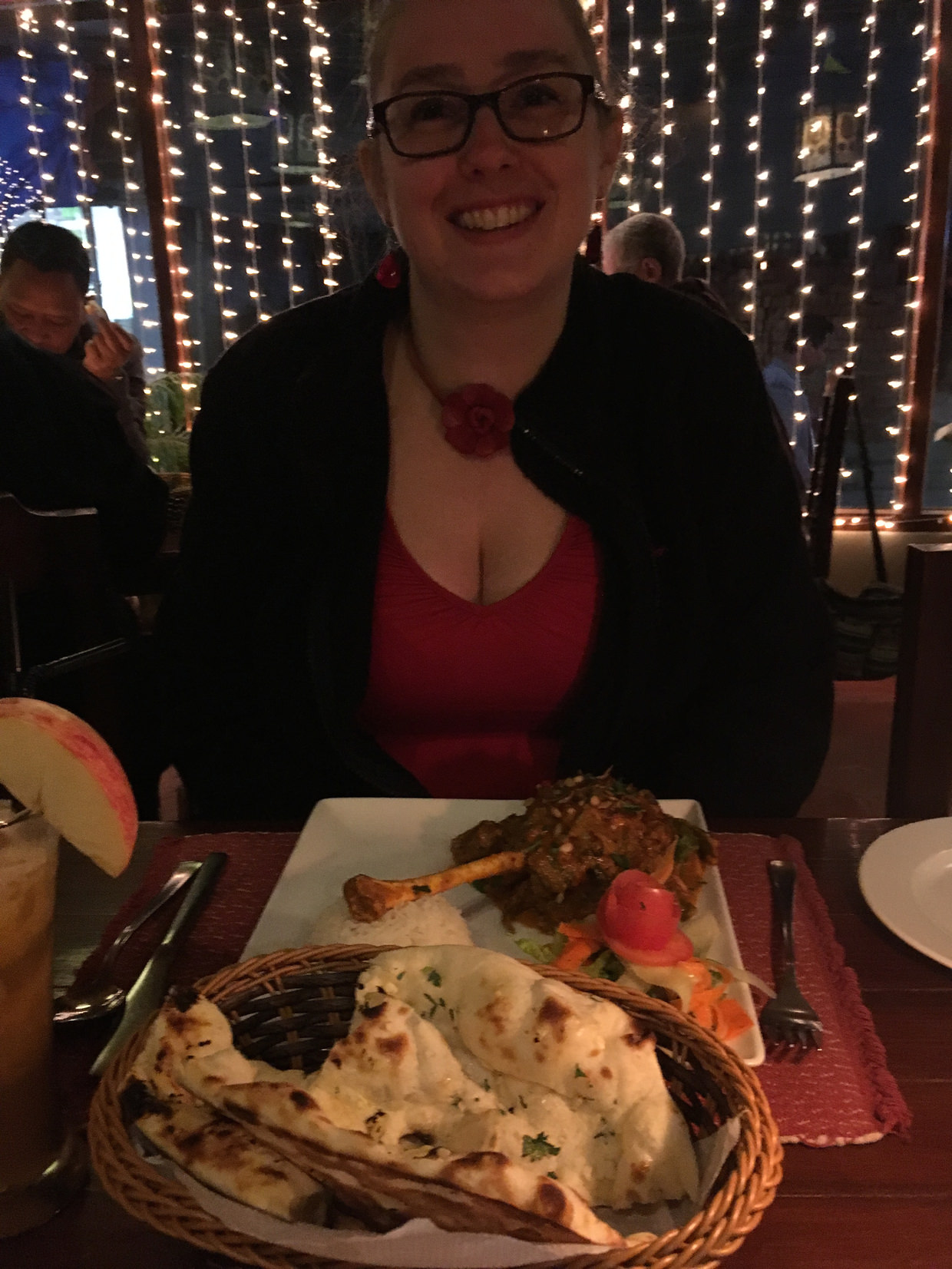2 days in Kathmandu
From Brighton we flew with Etihad to Abu Dhabi, then on to Kathmandu. I watched Doctor Strange on the plane, the panning dusty shot of Kathmandu hinted at what we might be in for, though I assumed that one wrong turn down a bad alley wouldn’t end with us getting mugged, and that we probably wouldn’t stumble on a secret ancient temple that could grant us mystical powers.
In the movie they left out the dreaded visa application process. After disembarking we needed to fill in forms, both on paper and on electronic terminals, terminals that had a tendency to reset midway through. $40 each, we had to pay in cash — the card machines were down, a common story in Nepal. That wiped out our cash reserves. Nepal is a country which asks that you carry a lot of notes in your pocket.
Thankfully our accommodation and transport were arranged and paid for, and we needn’t get fleeced in the taxi rank melee. “Which hotel?”, one asks, “oh, they are not coming, take this taxi”, a good trick but one we ignored — a man with our name stood opposite him.
Soon we were on our way into town, heading to Thamel, Nepal’s backpacker hotspot and hopping off point. We’d be staying just two nights before escaping to Pokhara.
Through rush hour traffic our little taxi car meandered, past school children walking home, alongside overfilled minibuses — a conductor with a death wish always hanging out the side, through dusty and dirty streets — unpaved and potholed. Buildings cram the streets, nestled together without planning or infrastructure, great cracks in their walls tell of the destruction caused by the 2015 earthquake.
At busy intersections police directed traffic, while coach, car and moped fought for space — horns as weapons, this battle has no rules. They drive on the left, but it seems optional. Everyone wears a face mask, pollution unstoppable.
Kantipur Temple House
In the backstreets of Thamel, along some streets just wide enough for a car, we found our hotel, amongst the noise and dust and ugly high rise flats, it is like an oasis. From this city madness rises a beautiful temple house, serene, birds sing in its gardens, guests relax with yoga and meditation outside, and in the late afternoon we are welcomed with a cold drink.
It’s quiet, and we are shown around. A traditional Newari style temple, with homemade Newari food in its restaurant, and tables that you sit at cross-legged. A statue sits in the shaded courtyard, and we climb the stone steps to our room.
The hotel is eco-friendly, our room has no heating nor air conditioning, not that we needed either. Copper jugs by our bedside provided drinking water, without resorting to plastic bottles, the bane of Nepal, which struggles to cope with its trash.
After some recuperation, a one hour nap after a 24 hour journey, we enjoyed the exquisite meals provided by the restaurant. Some Choila and Momos welcome us to Nepali cuisine. Outside the skies darkened, crows squawked and the night filled with thunder. A little chilly outside, we retired early and hoped to dispel our jet lag in one fell swoop.
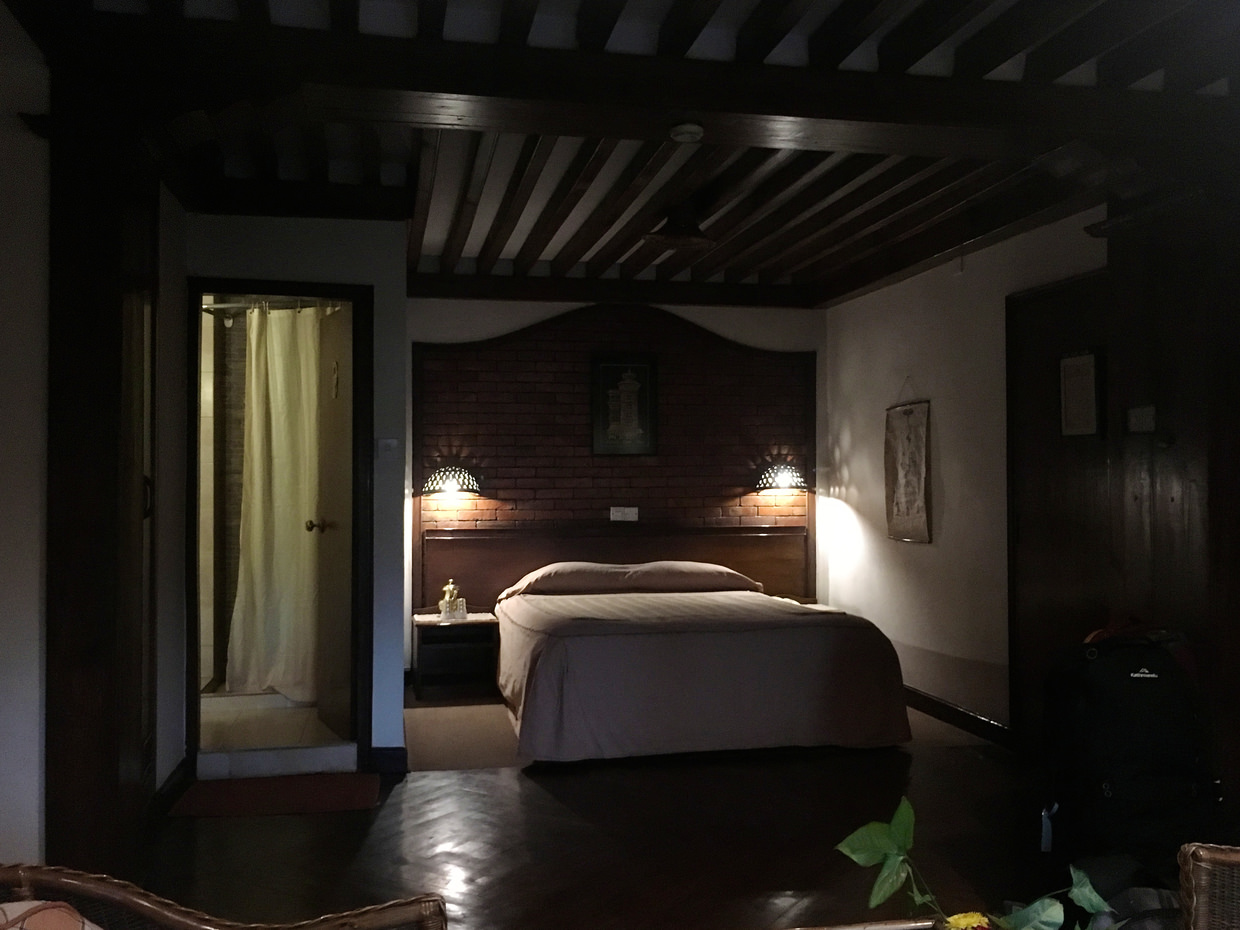
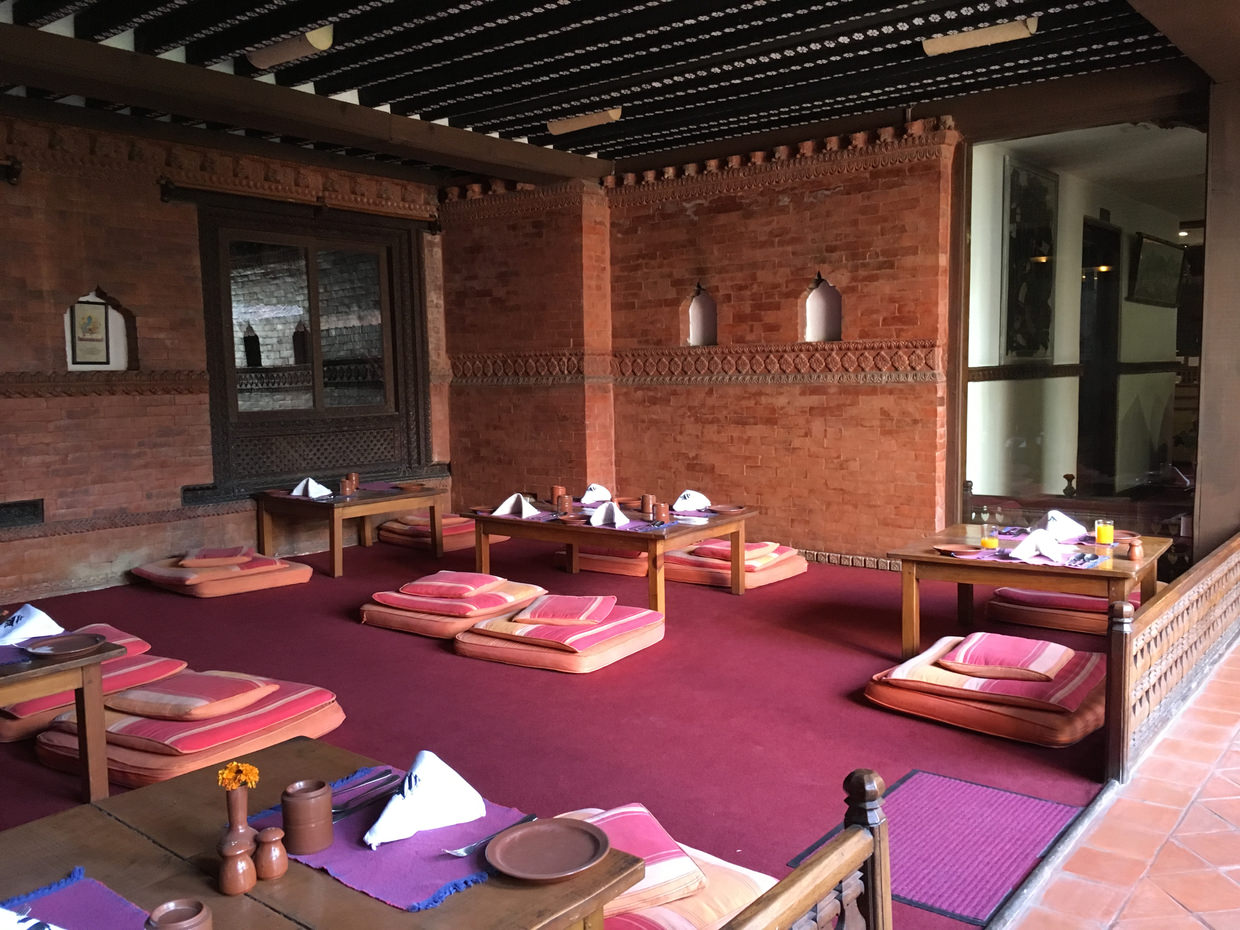
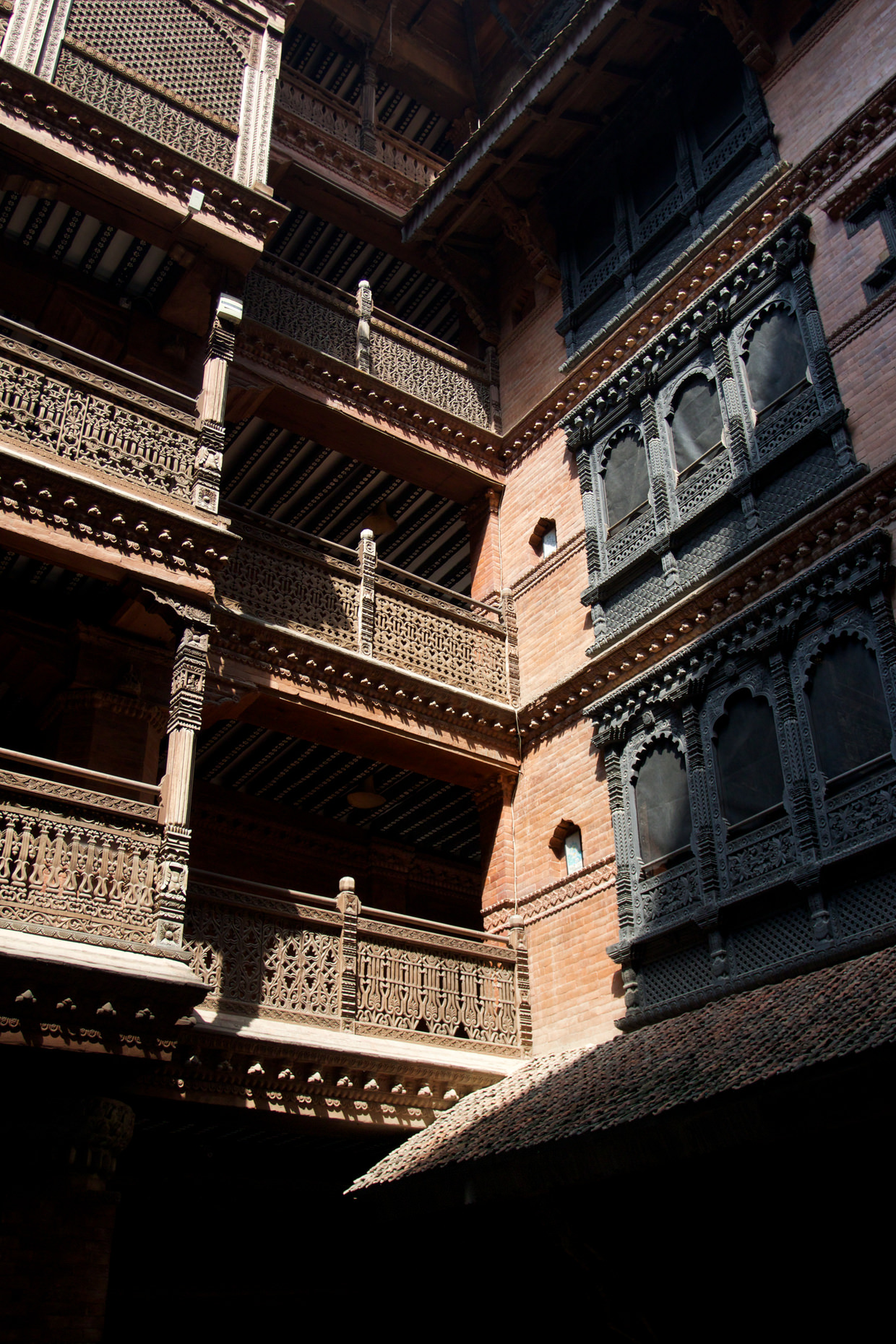
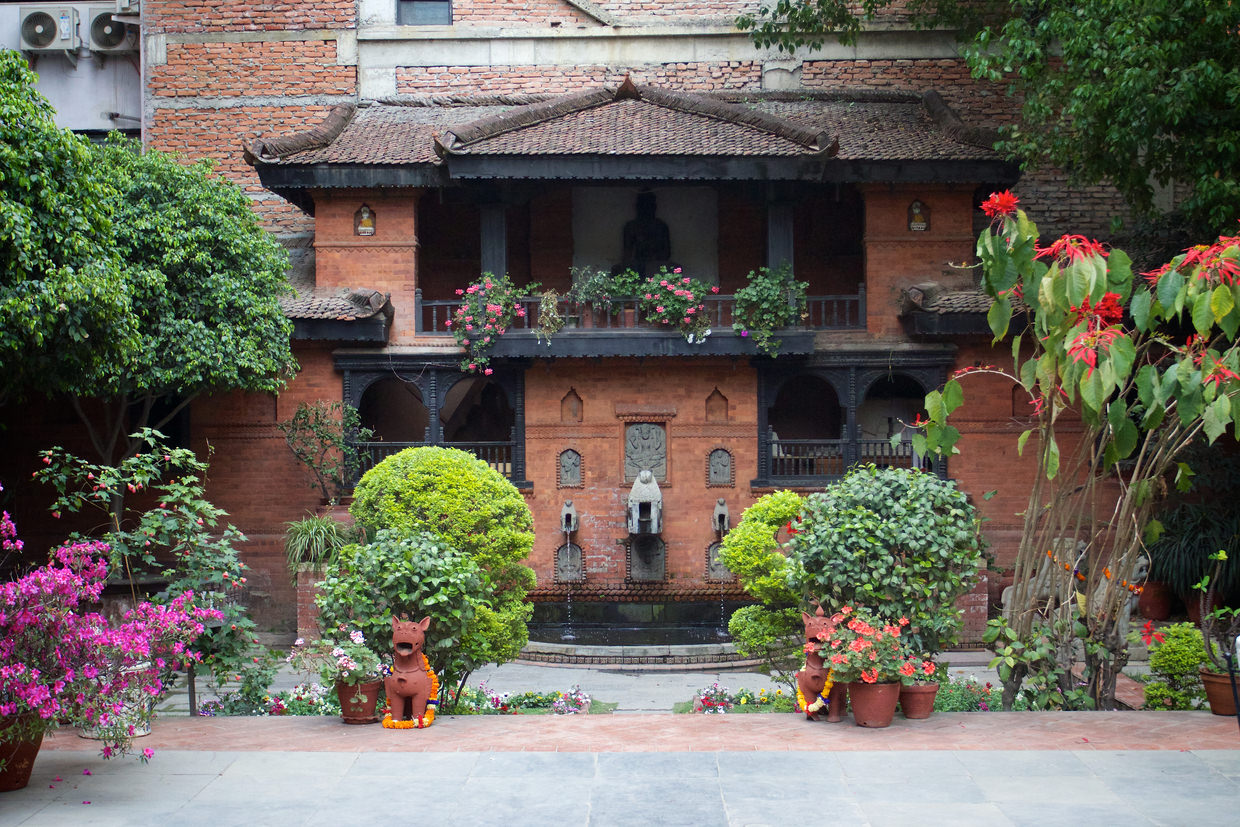
A walk around Thamel
After breakfast, tasty eggs, a good spread and surprisingly good coffee, we set off to explore Kathmandu on foot. Our immediate priority was to arrange transport to Pokhara; we booked a greenline coach online but needed to find their office to pickup tickets and pay, before we depart tomorrow.
In Thamel there is no distinction between road and pavement, it’s a free for all where vehicles drive at speed through criss-crossing shoppers. In between bookshop and clothes shop, we dodged moped and taxi. The dust in the air rubbed rough against our throats. We wouldn’t need a face mask for just one day we told ourselves. A 5 day trek around the streets of Kathmandu must be more arduous than Everest Base Camp.
In the crisp morning we’d overestimated the cold and dressed in jumpers and coats. By 9am the temperatures were rising into the teens and we were overdressed. We found the Greenline pickup point, not 10 minutes from our hotel.
Opposite, a refuge. “The Garden of Dreams”, a walled garden in the city. Built in the 1920s, it’s modelled on an English garden, with little ponds for fish, terraces lined with jasmine, and benches for lovers. That’s where we parked ourselves, in the sunshine we planned our day and watched northern palm squirrels squabble amongst themselves.
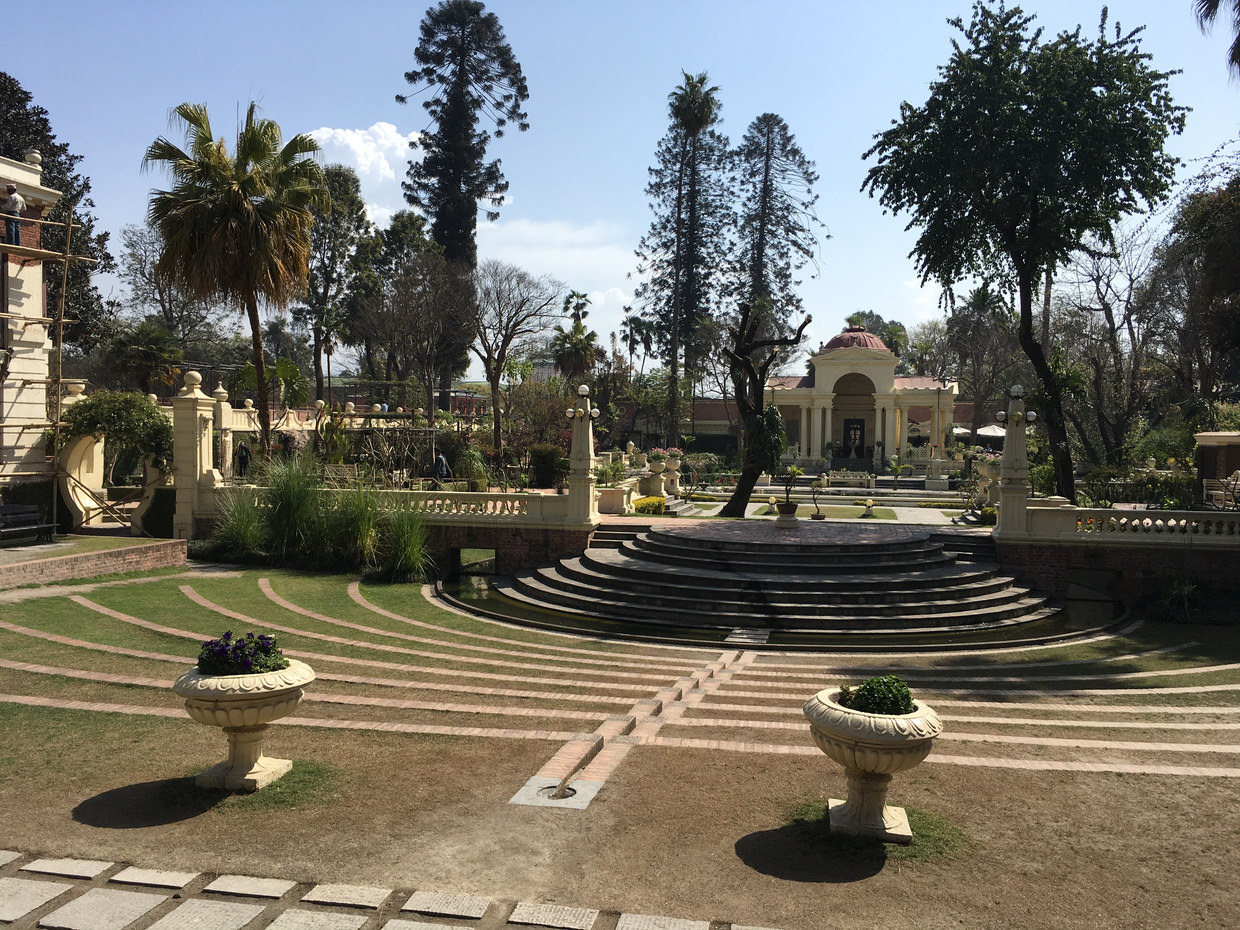
From the gardens we headed south, through Thamel and towards Durbar square. For once I was happy to go shopping, every shop was a little break from the dusty roads. Dust, diesel and incense punctuate the senses. Ancient temples, damaged from the earthquake, stand alongside modern concrete monstrosities, and everything is entwined with wild black power cables, the living wrapped around the dead. The Kantipath main road took us to Annapurna Temple, where we zig-zagged through tight side streets until we reached Durbar square.
1000Rs to enter, 2 passport photos and some form of ID to get a reusable ticket. We didn’t have these — jet lagged and too hot, we needed a break. On the corner was a café and it had a roof terrace, The Little Door Cafe. A shop sign read, “Emergency photos quick”.
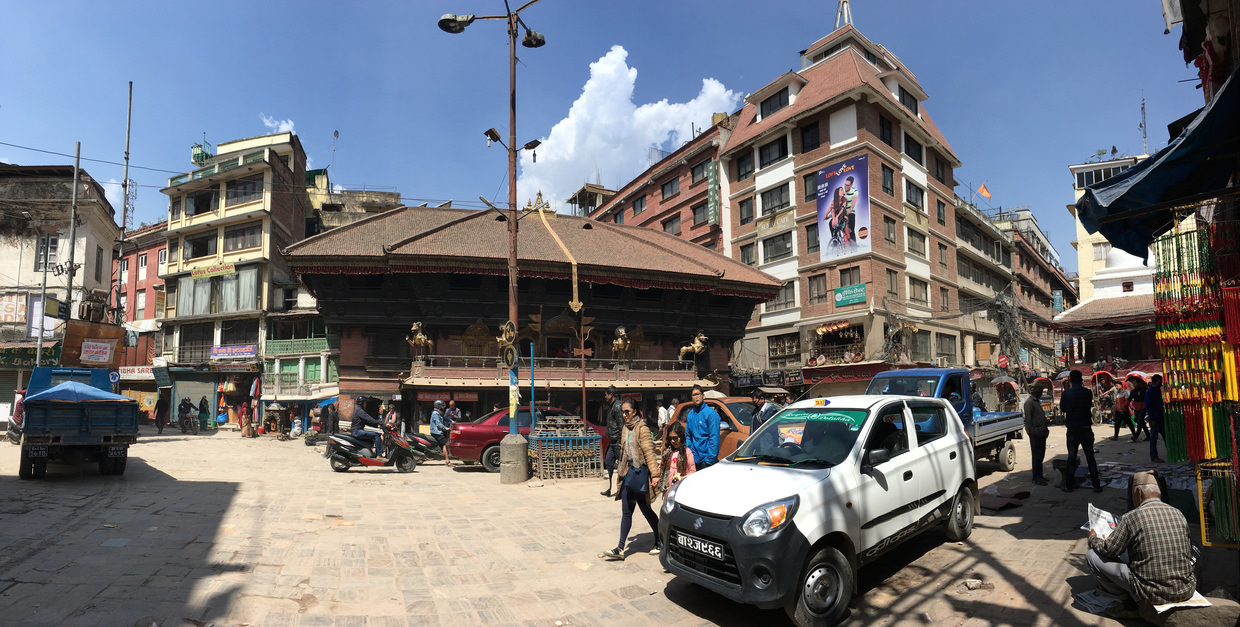
The sun had climbed high, the day was hot and our cold beer and views felt like an oasis. Black kites circled while flocks of pigeons fled. Amongst the rubble of Durbar square, a loudspeaker, a political demonstration — soldiers watched with their machine guns. We watched with sizzling vegetable momos, the best momos we had in all of Nepal.
The once great sights of Durbar square, a UNESCO world heritage sight, stood as piles of rubble 2 years on from the disaster. Those still standing are propped up on wooden supports, great cracks in their walls betray their stability.
We were in no rush. From our vantage we watched the city tick-over, tourists coming and going, mopeds, bikes and cars tussling in the streets. With each new diner we learnt of another Nepal adventure; a 10 day trek in the remote East carrying supplies for villages; a short trip to Chitwan after arriving from Bangladesh, our adventure was just beginning.
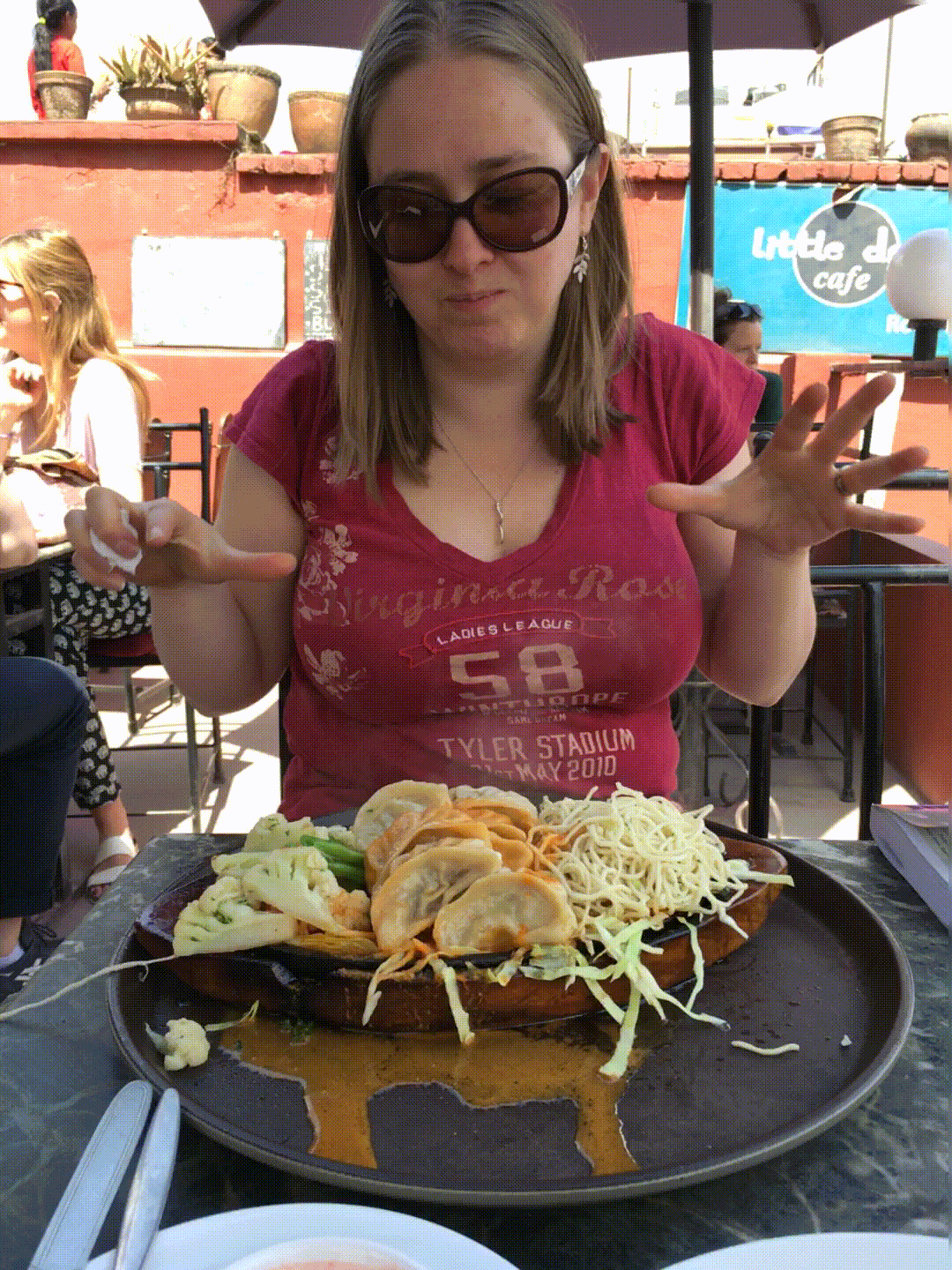
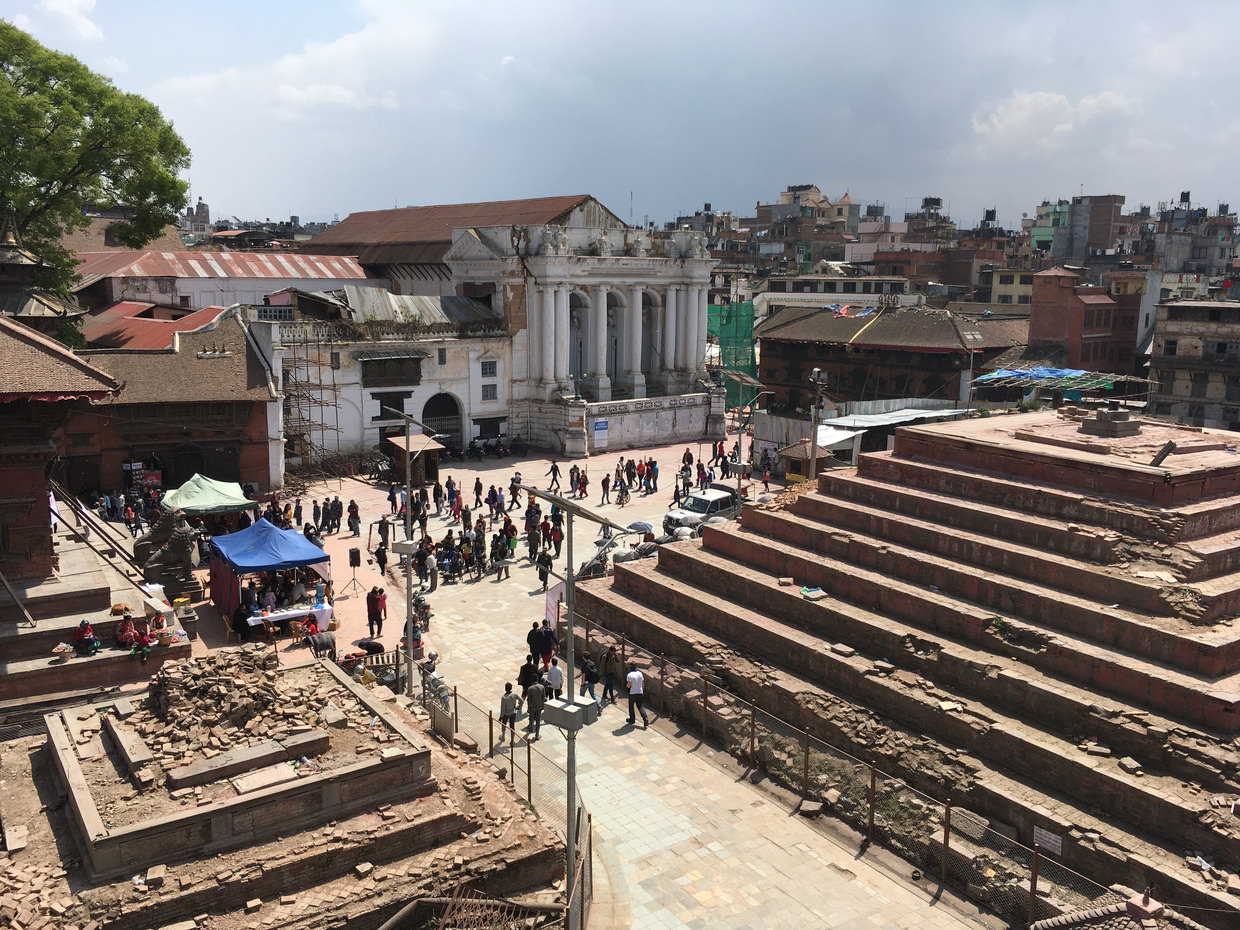
The surrounding hills were blocked out with a dusty haze, and when it was time to leave a storm cloud threatened. We hastily headed back, the air humid, commuters putting on coats and seemingly going that little bit faster. We stopped only for essentials — a face mask and, of course, some clothes shopping. Sam searched for a pashmina, I urged her on, gesturing to the sky. In Thamel we ran, the rain had lost its patience. We escaped the worst, and from our room we watched the downpour, dust hammered back to earth, petrichor replaced petrol, and the air felt fresh.
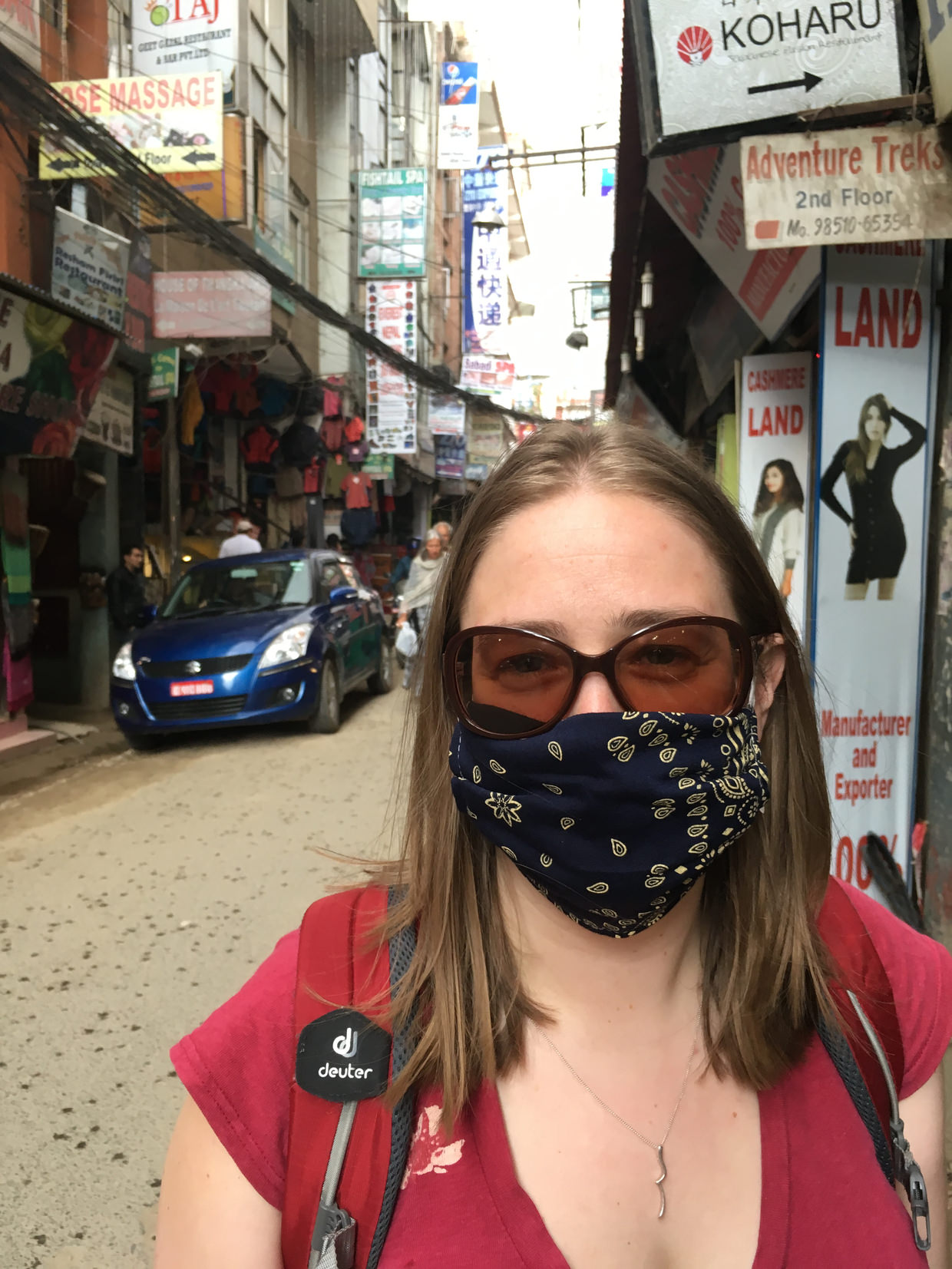
By evening the sky was clear, the odd star sparkled and the crows squawked in their roosts. What was before a dusty road was now a muddy river, and every passing vehicle threatened to cover us in silt. Hawkers tried to sell us wooden instruments.
We didn’t go far for dinner, the Indian place, “Third Eye” took our fancy. We sat between the candles and the fairy lights, a wooden sculpture smiled at us from the wall. Sam found the most expensive thing on the menu, Chef’s Special Raan — a leg of baby lamb. I had the Chicken Tikka Masala, with extra heat.
Next morning we towed our backpacks-with-wheels to the coach stop. The hotelier smiled at them, the “Kathmandu” brand emblazoned on the front.
From Kathmandu it would be an 8h30 coach ride to Pokhara.
